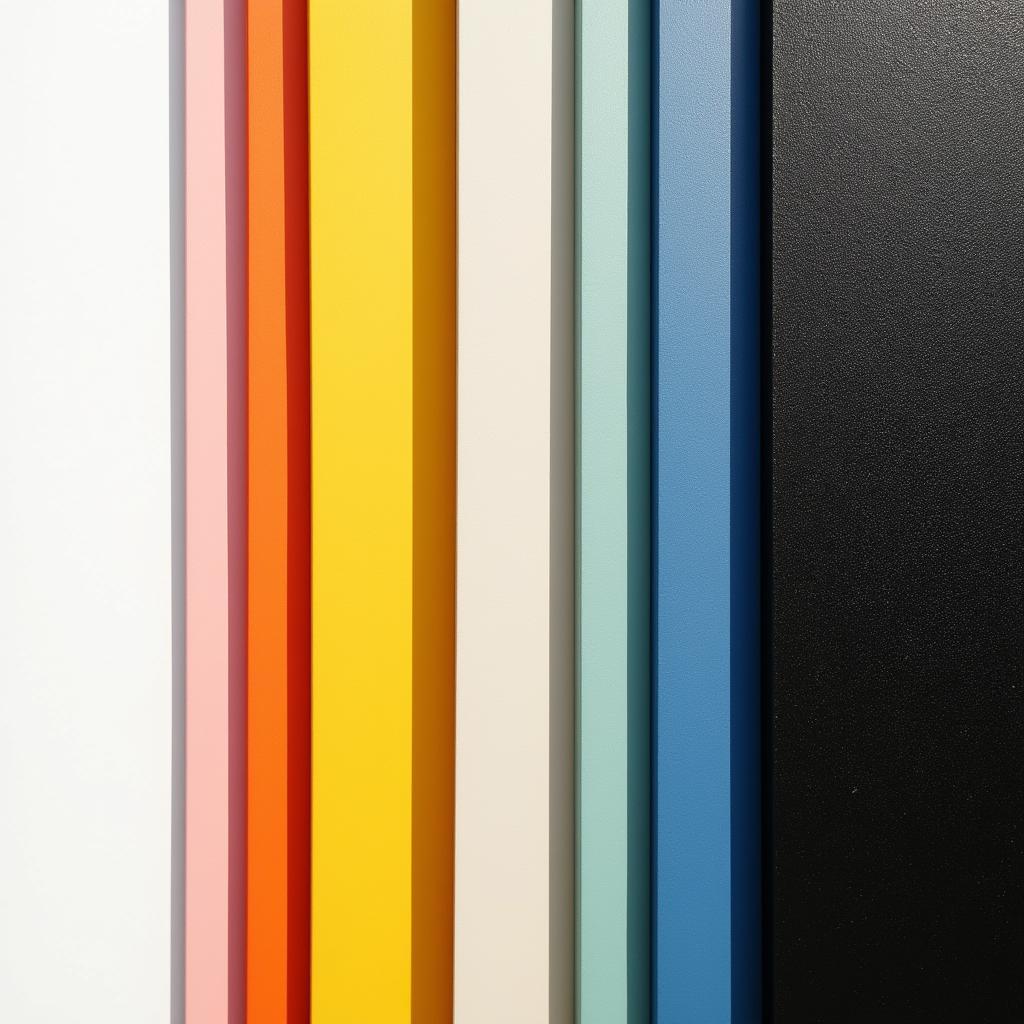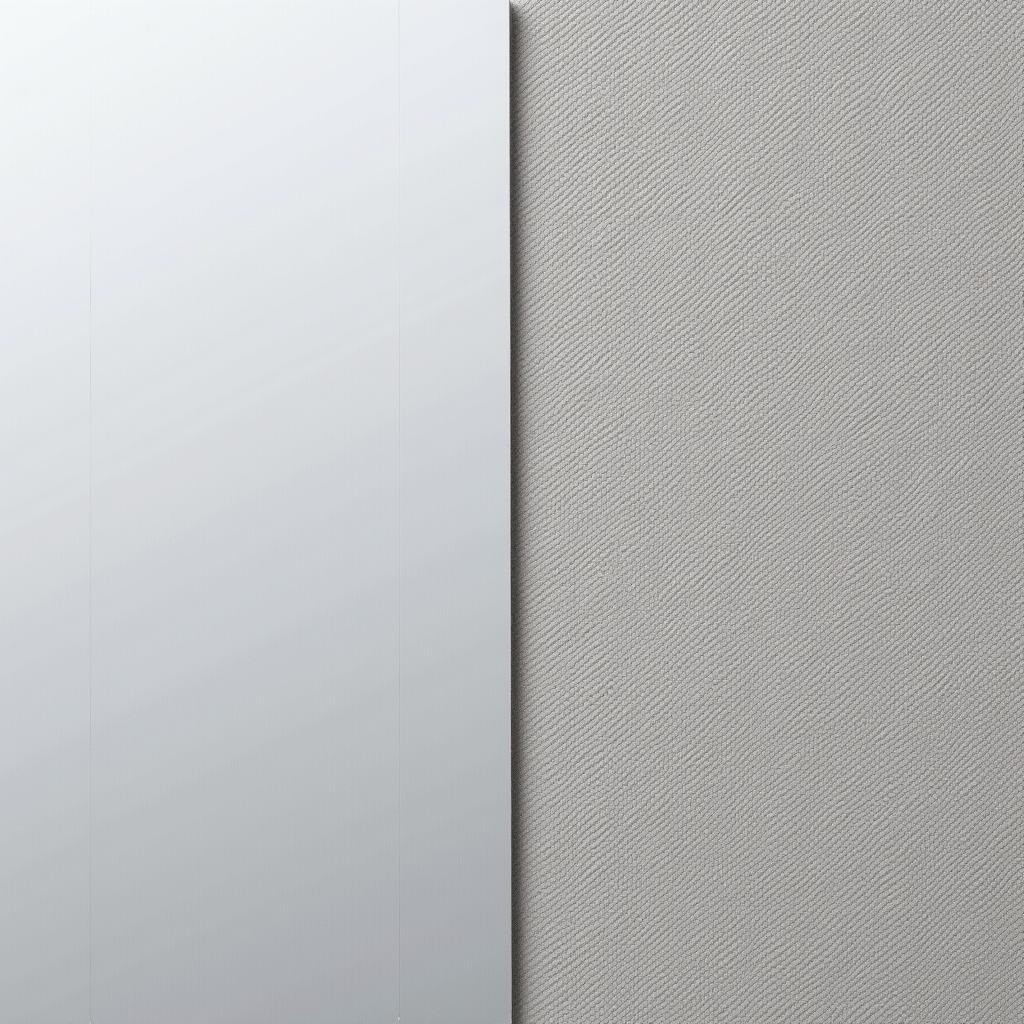Understanding which colors reflect the sun is crucial for various applications, from choosing the right paint for your house to selecting clothing for hot weather. White is generally known to reflect sunlight most effectively, but there’s more to the story than meets the eye. Let’s delve into the science of color and sunlight reflection.
The Science Behind Sun Reflection and Color
Color is perceived by our eyes based on the wavelengths of light that are reflected back to us. Objects absorb certain wavelengths and reflect others, and the reflected wavelengths determine the color we see. When it comes to sunlight, which contains a full spectrum of colors, the more light a surface reflects, the cooler it stays.
How Different Colors Reflect Sunlight
Different colors reflect and absorb sunlight differently. White reflects all wavelengths of visible light, making it the most effective color for reflecting the sun’s energy. Black, on the other hand, absorbs all wavelengths, making it the least reflective and the hottest. Between these two extremes lie a spectrum of colors, each with varying degrees of reflectivity. For example, lighter colors like pastel yellow and light blue reflect a significant portion of sunlight, while darker hues like navy blue and deep red absorb more.
 Sun Reflection on Different Colors
Sun Reflection on Different Colors
Choosing the Right Colors for Your Home
Selecting the right paint color for your home’s exterior can significantly impact its temperature, especially during hot summer months. Opting for lighter, more reflective colors can help keep your home cooler and potentially reduce energy costs associated with air conditioning. If you’re looking for inspiration for a hallway without natural light, consider reading what color to paint hallway with no windows.
Beyond the Basics: Factors Affecting Sun Reflection
While color plays a primary role, other factors can also affect how much sunlight a surface reflects.
Texture and Surface Finish
A smooth, glossy surface will reflect more sunlight than a rough, matte surface, even if they are the same color. This is because the rough surface scatters the light in multiple directions, reducing the amount reflected directly back.
Material Composition
The material an object is made of also influences its reflectivity. For instance, metallic surfaces generally reflect more sunlight than non-metallic surfaces. Understanding material properties is essential for applications requiring high reflectivity, such as solar panels.
 Material and Texture Influence on Sun Reflection
Material and Texture Influence on Sun Reflection
“Understanding the interplay between color, texture, and material is fundamental to effectively managing heat and light in any environment,” says renowned color consultant, Amelia Hues.
Practical Applications of Sun Reflection
The principles of sun reflection have wide-ranging applications in various fields. From architectural design to fashion and even space exploration, understanding how colors interact with sunlight is crucial. Choosing the right colors for clothing can help you stay comfortable in hot weather. For instance, wearing white or light-colored clothing in the summer can help keep you cool by reflecting more sunlight. If you’re curious about color symbolism, you might be interested to know what color is the month of october. Similarly, the Los Angeles Lakers colors are a great example of how color can be used to create a strong visual identity.
“Utilizing reflective materials in architectural designs can significantly reduce the urban heat island effect,” adds Dr. Albert Prism, a leading expert in sustainable architecture. “This leads to more energy-efficient cities and a more comfortable living environment.”
Conclusion
Choosing the right color to reflect the sun is essential for various applications, from keeping your home cool to staying comfortable in the summer heat. While white remains the most reflective color, understanding the nuances of color, texture, and material properties allows for a more informed and effective approach to managing heat and light in any environment.
FAQ
- What is the most reflective color? White
- Does texture affect reflectivity? Yes
- Why is black the hottest color? It absorbs all wavelengths of visible light.
- How can I keep my house cool in the summer using color? Paint the exterior with light, reflective colors.
- What are some examples of reflective materials? Metallic surfaces and mirrors.
- Does the color of my car affect its temperature in the sun? Yes.
- Why does white clothing keep me cooler than black clothing? White reflects sunlight, while black absorbs it.
More Questions?
Have other color-related inquiries? Check out our articles on how to pronounce colorful and what color is the june birthstone.
Need help choosing the perfect colors for your space? Contact us at 0373298888, email us at [email protected], or visit us at 86 Cầu Giấy, Hà Nội. Our 24/7 customer service team is ready to assist you.
